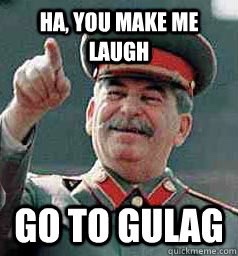I have read the “Guardian” article, but have not yet accessed the Professor Gross (Grosz) article. The assertion related in Uncle J’s post is, at first reading, perplexing, and a full reading of the “Guardian” article does little to dispel this perplexity. Could the whole business be based on a misquote by the paper, and a consequent misunderstanding on the part of the Polish authorities ?
I refer particularly to a comment on the article left by a “Guardian” reader -
"James Wald
October 18, 2015
2:27 am
Your report is solid enough, but the first sentence is ambiguous or misleading.
Grosz’s work is both important and controversial, and that is why language and grammatical precision are so important when complex scholarly issues are simplified in brief journalistic reports intended for a general public.
Your second sentence/paragraph should resolve this ambiguity, but just to be clear: Grosz did not say that Poles killed more Jews than the Germans killed. That would be patently ridiculous: there is no disputing that the Germans were primarily responsible for destroying some 90% of Polish Jewry. Among other things, this is why both the State of Israel and US Jewish organizations supported the Polish objection to casual references to “Polish” death camps (even if only as a geographical descriptor) and supported the Polish request to have UNESCO officially call Auschwitz the “former Nazi German concentration camp Auschwitz-Birkenau”so as to remove any possible ambiguity.
Rather, Grosz claims: Poles killed more Jews than they killed Germans in the course of the hostilities between 1939 and 1945. That is a serious charge, and therefore one that demands the most precise and scrupulous journalistic coverage, lest an already controversial issue become distorted by otherwise utterly avoidable misunderstanding."
This makes sense. Poland in 1939 had a Jewish population numbering in millions, and a long previous history of anti-Semitism. This anti-Semitism seems mainly to have been based on “religious hatred”, of the sort espoused historically in Germany by the likes of Martin Luther, but substantially different from the “racially” based, eugenics-fuelled anti-Semitism of the Nazis. In the initial period of their occupation of western Poland, the Nazis appear to have been anxious to forward the elimination of Jews from a territory high on their priority for “Germanisation”. This is shown by the activities of certain elements of the German invasion forces, of which the 1st SS Motorised Division, “Leibstandarte-SS Adolf Hitler” and of the SS Cavalry Brigade (attached to the nascent 3rd SS Motorised Division, “Totenkopf”. However, they faced a huge problem which, initially, they lacked the resources to address. In fact there were two huge problems - that of dealing with Jews in large and medium-sized urban areas, and the different problem of dealing with the widely-distributed Jewish population in rural areas, often living in all-Jewish segregated villages.
There is plenty of anecdotal evidence that anti-Jewish pogroms were conducted by Polish civilians, especially in the 1939-'40 period. It was standard practice of SS and Police Leaders in newly-occupied areas to take advantage of local adverse sentiment against Jewish neighbours in this way. However, it is virtually impossible to estimate the number of Jews killed in these local pogroms with any accuracy at all. A fair guess, however, would be that the numbers were considerable. By 1941, the position had changed substantially. By now, the SS and Police Leaders had full, effective control of the Polish Police, along with substantial numbers of armed German Policemen in Special Police/Reserve Police Battalions, along with a number of SD Security Police. They were now well capable of organizing a systematic massacre of rural Polish Jews themselves in which, of course Polish Police played a part, but within which the German Police and SS played the leading role. Again, the nature of this massacre made the numbers involved very hazy, and the allocation of particular numbers of killings to Polish Police quite unrealistic. The great massacre of urban Jews through the mechanism of ghettos and death camps was, on all evidence, a German “adventure”.
The question of how many Germans were “killed by Poles” during the occupation is also fraught with difficulties. It is quite clear that the numbers killed by the Polish Resistance was relatively small; it could not be otherwise, given the crushing weight of German occupation in Poland. It is quite possible that this number was fewer than numbers of Jews killed in early-war rural pogroms. But, again, numbers are hazy, even before the contribution made to killing Germans by the western and eastern (pro-Soviet) Polish forces with the Allied armies; again, such numbers cannot reasonably be attributed within the overall “kill” of the Allied armies.
Given the cultural and political sensitivity of the matter, Professor Grosz’s views are bound to remain so. This is not least because of the statistical fog into which one goes when trying to verify even the more modest assertions made by Grosz, as compared with the apparently unreliable second-hand report published by the “Guardian”. No doubt a great deal of heat, and little light, will be generated by this “controversy”. In any event, I am not sure how one could reasonably ground any defamation action against the good Professor. Best regards, JR.

